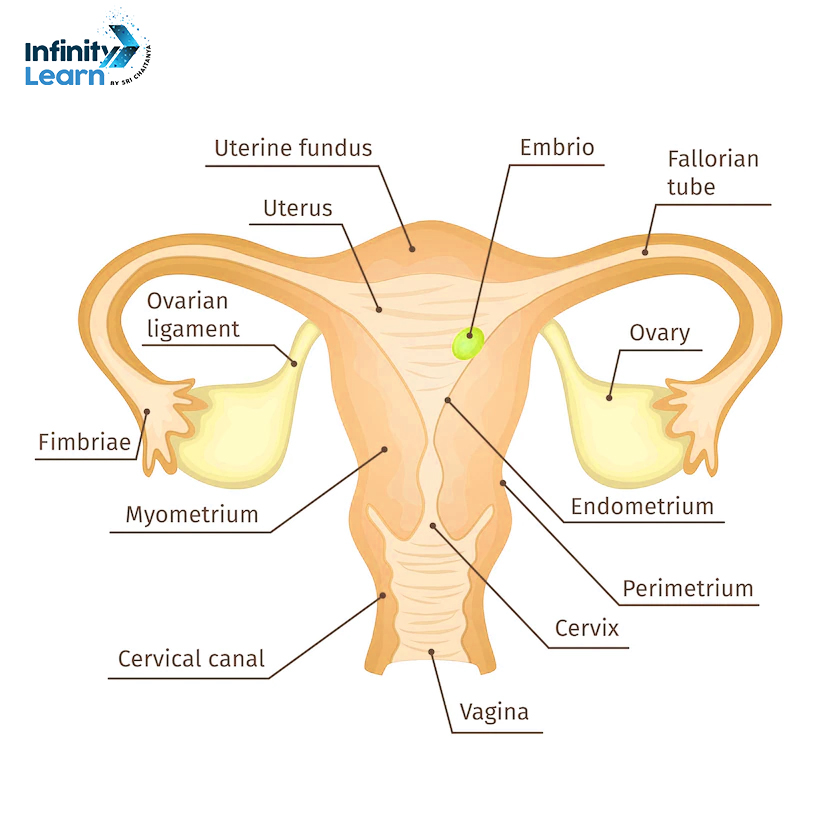Table of Contents
Female Reproductive System Diagram: The female reproductive system has two main parts: the main organs and the extra organs. The main ones are the ovaries, which make eggs and hormones like progesterone and estrogen. The extra parts include the uterus, fallopian tubes, cervix, and vagina. Outside, there are the labia minora, labia majora, and clitoris. The breasts aren’t reproductive organs, but they’re still important in this system.
Let’s learn more about the female reproductive diagram.
Female Reproductive System Diagram Class 10

What is the female reproductive system and how does it work?
The female reproductive system plays a vital role in sexual activity, fertility, pregnancy, and childbirth. It consists of several parts:
Ovaries: There are two ovaries, one on each side of the uterus. They produce female hormones like estrogen and progesterone and store eggs that mature and are released every month, a process called ovulation.
Fallopian tubes: These are two thin tubes that link the ovaries to the uterus. They allow eggs to travel from the ovaries to the uterus.
Uterus (womb): The uterus has a lining that thickens each month with blood and other substances. If pregnancy happens, a fertilized egg attaches to the uterus lining and develops into a fetus and later a baby. If there’s no pregnancy, this lining sheds and exits the body, known as menstruation or your period.
Cervix: This is the lower part of the uterus that connects it to the vagina.
Vagina: It’s a muscular tube connecting the cervix to the outside of the body.
Female Reproductive System Diagram FAQs
What are the 5 main female reproductive systems?
The five main female reproductive systems are the ovaries, fallopian tubes, uterus, cervix, and vagina.
Which is the female reproductive organ?
The female reproductive organ is the uterus, where fertilized eggs develop into embryos.
What are the 7 functions of the female reproductive system?
The seven functions of the female reproductive system include egg production, fertilization, embryo development, menstruation, hormone production, childbirth, and lactation.
What are the female reproductive hormones and their functions?
Female reproductive hormones include estrogen, progesterone, and follicle-stimulating hormone (FSH), which regulate menstrual cycles, ovulation, and pregnancy.
What are the parts and functions of the male and female reproductive system?
The male reproductive system includes the penis, testes, vas deferens, prostate gland, and seminal vesicles, while the female reproductive system includes the ovaries, fallopian tubes, uterus, cervix, and vagina. Each part has specific roles in reproduction.
What is the common disease in the female reproductive system?
A common disease in the female reproductive system is endometriosis, where tissue similar to the lining of the uterus grows outside the uterus, causing pain and fertility problems.
What are the reproductive health problems of females?
Reproductive health problems in females include menstrual disorders, pelvic inflammatory disease (PID), ovarian cysts, and sexually transmitted infections (STIs).
What is the female reproductive syndrome?
Female reproductive syndrome refers to a group of symptoms or conditions affecting the female reproductive system, such as polycystic ovary syndrome (PCOS) or premenstrual syndrome (PMS).







